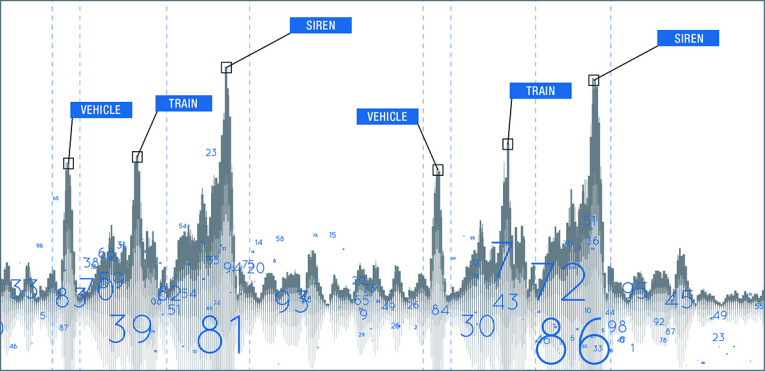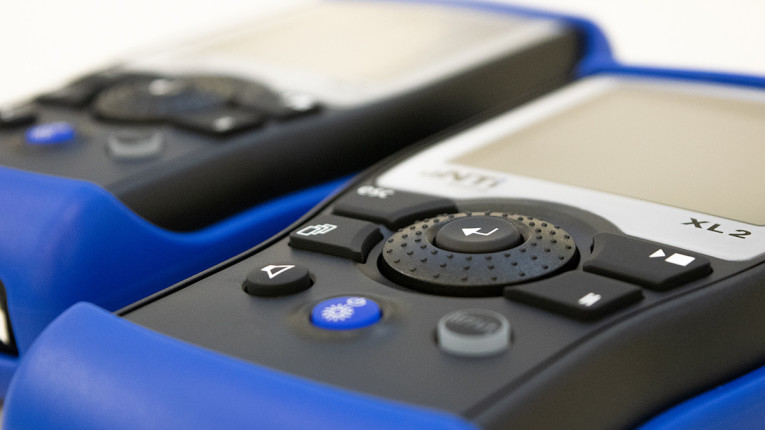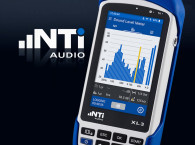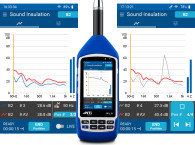
NoiseScout is the complete noise monitoring solution from NTI Audio. Noise levels are recorded on-site by the XL2 Sound Level Meter and are available for remote monitoring and download. NoiseScout is aimed at both short term noise assessments and long term monitoring applications, with results displayed in a web browser and measurement data presented online in charts and dashboards. Multiple noise level meters can be monitored simultaneously within a map view, thus providing localized geographic visualization for all noise levels at a glance.
To assist in identifying the cause of a noise level alarm, NoiseScout now provides a text description of the content of the wav files that are recorded during an alarm event. This is achieved using AI analysis and Noise Classification, which NTI Audio recently implemented. The AI-generated text indicates what the possible cause of the alarm could have been, and therefore reduces the necessity to listen to the actual wav file.
As the company explains, in NoiseScout, wav files of audio samples from intervals where levels were high are compared to a library of classified sound samples with a pre-trained audio event classifier that predicts audio events based on a dataset on the NTi Audio internal servers. The functions of this classifier form the central part of the newly implemented AI system. These functions use pattern matching to determine the closest matches between the current audio sample and the library.

The result is then weighted according to the sound pressure levels within the wav file. Each pattern is assigned to predefined classes, and the class labels of the closest matches chosen. A score value is assigned to each match. The score is a measure of the accuracy and precision of a best-match classification aggregated across the whole wav file. Scores are higher when there is less background noise. The text description and associated score are displayed when the score is greater than 20.
This AI analysis and Noise Classification assist in identifying the cause of noise level alarms, reducing the necessity to listen to the actual wav file, and thereby saving time. Of course, the wav files are still available for a more in-depth analysis. See the AI in action in the Alarm List of the NTi Audio demo website here.

Improvements for XL2 Sound Level Meter
NTi Audio's ongoing customer-driven policy of regularly introducing free functional updates to the XL2 Sound Level Meter continues to increase the value for this already comprehensive and powerful portable solution. The good news for all XL2 Sound Level Meter owners is the fact that new features and improvements have just been introduced, including added support for the System Self-test (CIC) function of the new 1/2" M2340 Measuring Microphone. This powerful feature will be appreciated in particular by users of the NoiseScout solution, and the operators of unattended noise monitoring stations.
Another innovation in the area of outdoor monitoring, was the integration of the correction values for horizontal sound incidence when using the M4261 Measuring Microphone together with the WP61 Weather Protection kit. This means that in addition to the proven WP30 for 1/2" microphones (type M230 and M2340), a solution is now also available that fits the M4261 class 2 microphone.
The newly-introduced support of the ANSI/ASA S12.2-2019 standard for noise curve measurements provides a solution for another field of application. This update is especially useful for users in the American and Asian regions who want to analyze noise in offices, etc.
The XL2 Vibration Meter also recently received an update with an optimization of the automatic naming of recorded WAV files. This is useful when analyzing data, as it makes it easy to detect, for example, overdrive during the measurement, and prevent undetected incorrect data.
The latest firmware version v4.80 for the XL2 Sound Level Meter includes improved information to the user, during a reverberation time measurement, as to when the measurement is out of range due to very high sound levels. The operator can then reduce the source level and immediately repeat the measurement.
Finally, if the Extended Acoustic Pack option is activated on the XL2, users are given the choice to select an A-weighted level, limited to the frequency range 20...200 Hz. This level can be used, for example, as an indicator of low-frequency sound at open-air events.
www.nti-audio.com







